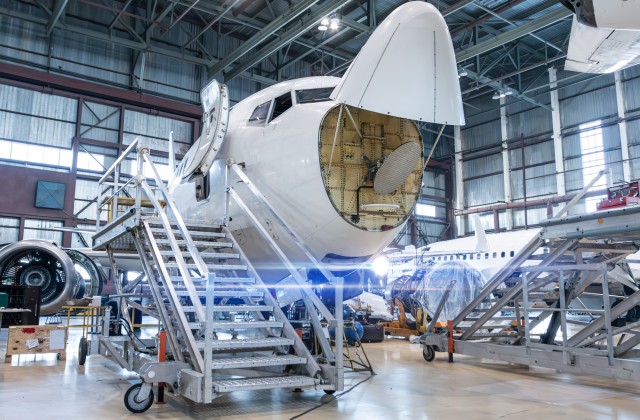
The weekend is finally close. Or, is it only Monday? Is it the fourth week of social distancing, or maybe the fifth…? Everything is blending together as the pattern of wake up, eat, work, and repeat is all occurring within a distance measured in feet rather than miles. Our professional lives are consumed by video calls and chat messages, which are starting to feel even more familiar than in-person meetings and office small talk. At the same time, jobs feel foreign because the transition to remote work has been so abrupt and leads to so many previously unconsidered questions about the future.
This familiar but foreign way of life seemed incomprehensible just a few weeks ago, but it didn’t come without warning. In July 2005, epidemiologist Dr. Michael T. Osterholm wrote in Foreign Affairs magazine that, “the arrival of a pandemic influenza would trigger a reaction that would change the world overnight.” As dooming (and now prescient) as those words were, Dr. Osterholm also added some hope. “Can disaster be avoided? The answer is a qualified yes. Although a coming pandemic cannot be avoided, its impact can be considerably lessened. It depends on how the leaders of the world — from the heads of the G-8 to local officials — decide to respond. They must recognize the economic, security, and health threat that the next influenza pandemic poses and invest accordingly.
Turn Déjà Vu to Vuja De
Shortly after Dr. Osterholm’s article, in May 2006, AMR Research (acquired by Gartner in 2009) published Supply Chain Saves the World with a chapter dedicated entirely to preparing for pandemics. In its “top five actions to take now” AMR advocated for investments in five focus areas that would benefit supply chains in any circumstances, but especially so under pandemic conditions, as shown below.
| Investment area | Benefit in pandemic conditions | Benefits without a pandemic |
|---|---|---|
Supply risk planning (e.g. flexible supplier network) | "The risk of switching to alternative sources has been examined..." | "... mitigate risk of smaller disasters and local disruptions." |
Homebound (e.g. mobile workforce) | "Business can continue..." | "Better customer service, decreased cost of sale, and redundant operations..." |
Self-service (e.g. minimized human intervention) | "Business continues with a limited in-house staff." | "The cost of labor in fulfilling routine orders is reduced." |
Training (e.g. managing skills and service) | "Companies can continue to function as a viable business with little disruption..." | "Collaboration between employees spurs innovation..." |
| Risk management | "Operations continue because of informed choices, strong cash management, and appropriate proactive investment." | "The company can make informed choices for all investments." |
Reconsidering the proposed investments, as well as rehashing the warnings of 2005, brings a looming sense of déjà vu. However, rather than allowing ourselves to get stuck on the feeling of having been here before, we must shift our perspective to what we can do going forward. In doing so, we turn déjà vu to vuja de, which according to Bill Taylor, founder of Fast Company, is “looking at a familiar situation with fresh eyes, as if you’ve never seen it before, and with those fresh eyes developing a new line of sight into the future.”
The new line of sight starts with the same baseline
Perhaps the most appropriate starting point for a fresh perspective on resiliency is Dr. Osterholm’s statement that “a coming pandemic cannot be avoided.” We understand this now because we are experiencing it firsthand, but we must also consider the implication that this will happen again in the future. Hoping that life returns to whatever normal was before and that this scenario never happens again is unrealistic.
So, from the standpoint of redefining what resiliency means to supply chain, start with the baseline that disruption is imminent and unavoidable. This belief must change expectations, from figuring out how to manage through disruptive moments on the fly to making it a business-critical need to know where and when the chain will break, with some idea of how to fix it.
To enable that change, intertwine AMR’s recommendations for supply risk planning and risk management to create another new perspective from old ideas, especially when considering how technology intrinsically connects them. We now have the ability to constantly pressure-test our plans using real-time scenarios, to record the decisions that we did --and did not -- make, and to use digital tools to augment the human brain in identifying trends and creating new insights.
Through this process, what begins as a rehashing of past ideas and behaviors will lead to new ways of working and a new mindset, particularly within supply chain. This is the mindset that says that we know that things won’t always go as planned and sometimes our expected scenarios will be way off the mark, but we will use what we know to better prepare us for what we don’t.
We may not realize it, but the current situation is leading people and supply chains into this process already. We are becoming more accepting of the way things are, we are looking for ways to be more productive and we are trying to find better balance along the way. The work that we are putting in today will make us more resilient tomorrow. By building that resiliency, what was once foreign will soon be familiar.
For ideas on how to redefine and ingrain resiliency within your supply chain, read 5 disruption response best practices: Risk mitigation for today and the future.





